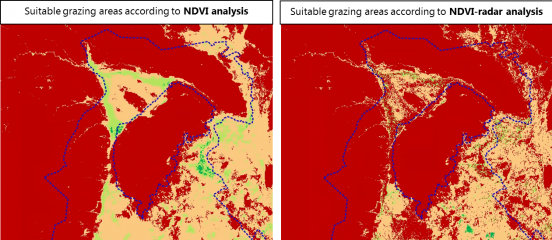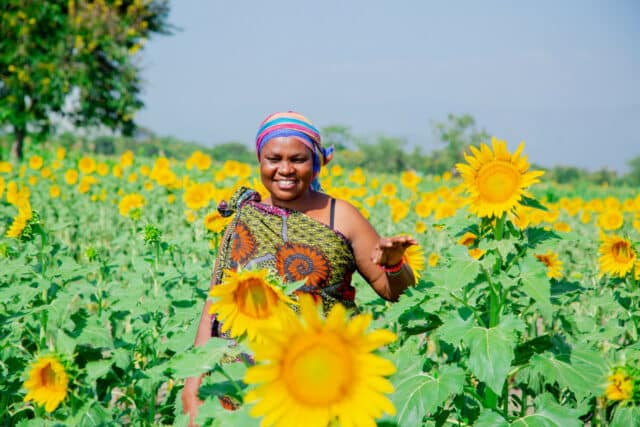News
6 January 2016
Mapping pasture quality in Afar, Ethiopia

As part of the Building Resilience and Adaptation to Climate Extremes and Disasters (BRACED) programme, LTS International, working with Farm Africa, is developing a unique tool for monitoring changes in vegetation in remote rangeland areas of Afar, Ethiopia.
Farm Africa and Mercy Corps are implementing participatory rangeland management (PRM) in Afar and Somali regions, as part of a wider project to build pastoralist resilience to climate change. PRM empowers rangeland users to find more sustainable ways to use available grass and water, and improve pasture quality. The results of this process can be difficult to measure as typically they cover large areas in remote locations.
The RaVeN monitoring tool under development by LTS International aims to address this problem. This new tool makes the measurement of change in pasture quality rapid and automated by using freely available optical and radar satellite data in combination with meteorological data. The tool uses this data to compare the relative greenness of an area at different points in time, while discriminating between different vegetation classes and controlling for the effects of different rainfall levels. It therefore enables changes in pasture quality to be assessed and quantified.
In order to measure change and monitor the vegetation “greenness” in these rangeland areas, the LTS team needed to understand the historical trends of vegetation “greenness” in the site of interest. To measure vegetation “greenness”, 15 years of historical satellite imagery (2000 – 2014) was acquired from two different satellites. The data was then used to compute the Normalised Difference Vegetation Index (NDVI), which measures the “greenness” of the land and is widely used as a proxy for vegetation in monitoring land cover changes. Figure 2 shows NDVI vegetation changes over the fifteen-year period in the project area. An animation of the fifteen-year analysis can be seen online at http://t.co/PoIQev5Cm8.

In order to be sure that identified vegetation changes are a result of improved management rather than changes in weather, the tool must take into account historical climatic conditions. By understanding the historical correlation between rainfall and NDVI in the project area, the tool will establish a baseline against which future observations can be compared. This work is still underway.
The final challenge emerged from the use of NDVI as an indicator of pasture quality. Unfortunately, NDVI does not distinguish between vegetation types, but for the tool to measure whether increases in “greenness” will improve livelihoods, differentiating between edible and non-edible vegetation is essential. Much of the study area is covered with the invasive species Prosopis juliflora, which has spread across nearly 1.2 million hectares in Afar Region alone. The Prosopis species is one of the most invasive in the world, and competes with other more palatable rangeland species for water and is inedible to cattle and sheep. So to monitor the true impacts of the programme, the tool needs to separate areas covered by these trees from those covered in edible pasture.
To solve this problem LTS International has used Radio Detection and Ranging (radar) remote sensing technology to integrate and complement the NDVI vegetation maps. Using the European Space Agency’s Sentinel-1 radar satellite data, a map of vegetation structure can be produced, to show which areas are dominated by Prosopis juliflora. Changes in the areas suitable for grazing can be monitored over time.
The RaVeN monitoring tool is currently being tailored for the project site in Afar. Some crucial next steps need to be carried out to gain the most effective information on rangeland quality, including
- An examination of the relationship between NDVI and monthly rainfall to assess the historical correlation between these two variables.
- Supported by Farm Africa, the LTS team will undertake fieldwork in early 2016 to examine vegetation on the ground and check that this correlates with the remotely sensed imagery.
- The results of this fieldwork will then be analysed to identify which radar values are sensitive to which vegetation classes, and used to refine the model.
Written by Simone Vaccari, a consultant at LTS International




